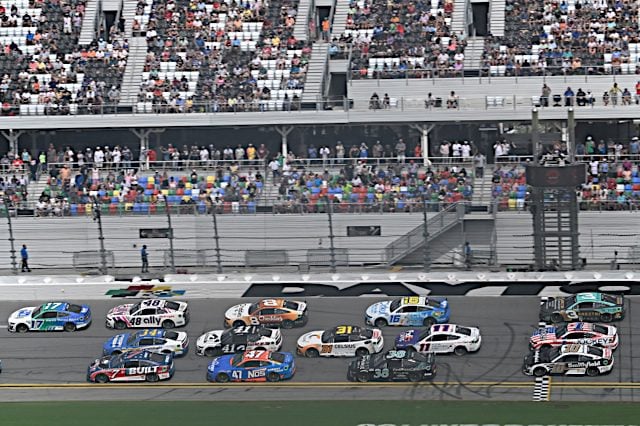When the 2022 NASCAR Cup Series season kicked off in February, it marked the long-awaited debut of the Next Gen car. More than just a new design, the Next Gen car signaled a departure from business as usual in the Cup Series. Instead of each team building its own cars in-house, teams would now be required to purchase a spec chassis from a single supplier.
Many other components which teams previously built from scratch had to be purchased from other approved vendors. By moving toward common chassis and parts, NASCAR hoped to limit the cost required to compete in the Cup Series and increase parity throughout the field. Accordingly, the sanctioning body promised stiff penalties to anyone caught altering the vendor-supplied parts.
NASCAR also tried to address some complaints that hung over the Gen 6 and Car of Tomorrow years with the Next Gen design. The Chevy Camaro, Ford Mustang and Toyota Camry Next Gens all received unique front styling based on their production car counterparts. Composite bodies, as opposed to the traditional steel bodies, made the car stronger and less resistant to damage from impacts. Each car also featured a diffuser hanging below the rear bumper, designed to lessen the influence of dirty air and allow trailing cars to make passes more easily at high-speed tracks.
The true test of the Next Gen car was always going to be its performance in the races themselves. Unsurprisingly, its success rate was a mixed bag. The new car hit some of the targets that NASCAR aimed for and missed others.
Read all of Frontstretch‘s content looking back on 2022 here
What was truly unexpected was how much influence the Next Gen car had on the 2022 season. Nearly every week’s race provided a new twist with the Next Gen’s rollout, causing fans and drivers alike to reevaluate the car each time. Both the good and the bad of the Next Gen car had an enormous impact on 2022.
Perhaps the biggest and most positive outcome from the introduction of the Next Gen car is that it did increase parity among winners. Through 36 Cup races, 19 different drivers went to victory lane, an amount not seen since 2001. Five first time winners contributed to that number: Austin Cindric, Chase Briscoe, Ross Chastain, Daniel Suarez and Tyler Reddick. Chastain in particular had an excellent season, taking Trackhouse Racing Team to the final round of the playoffs in his first season with the team. Reddick and Austin Dillon also did great work for Richard Childress Racing….
Click Here to Read the Full Original Article at Frontstretch…

